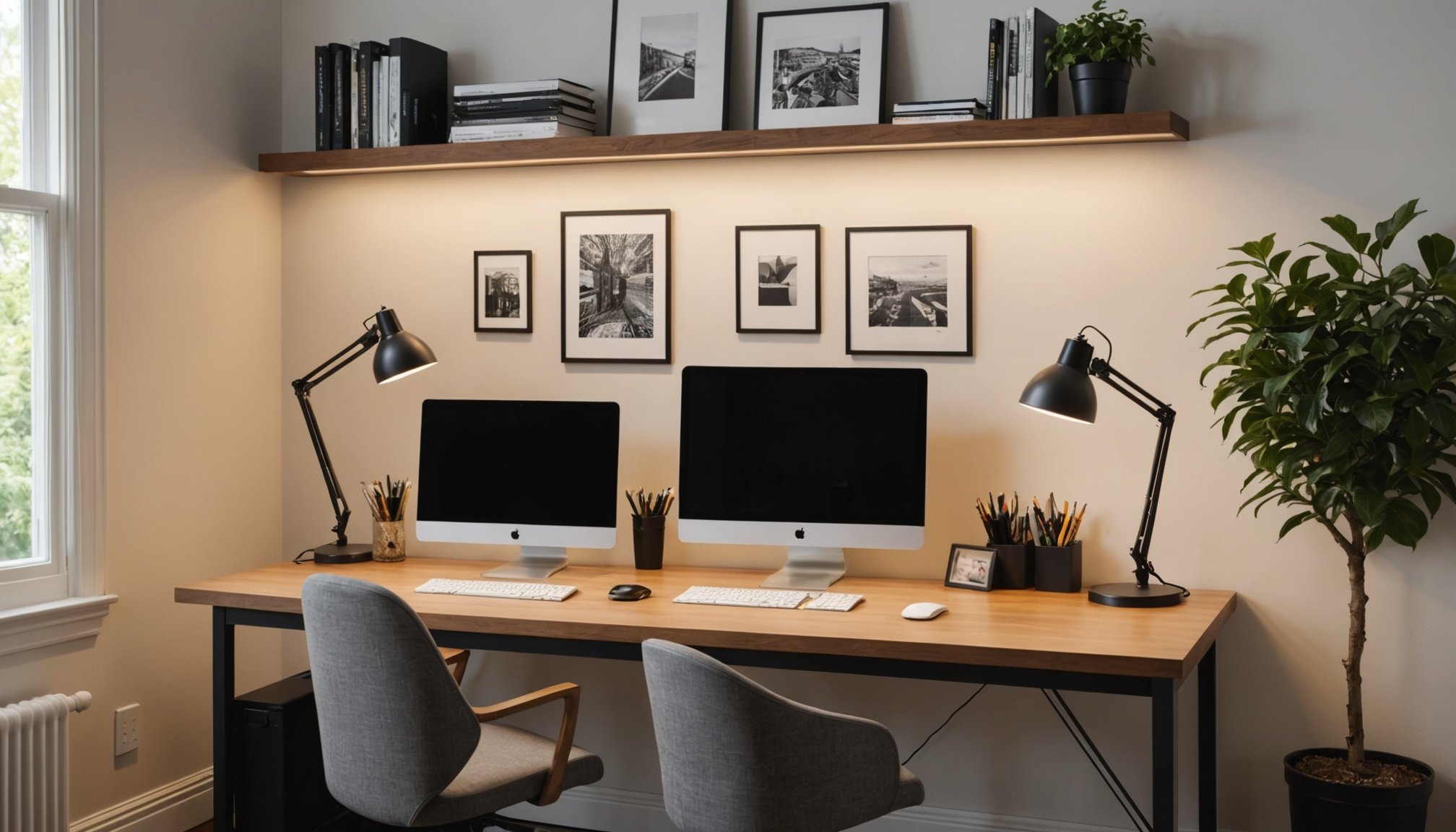Overview of Energy-Saving Lighting Solutions
Energy-saving lighting is essential in reducing electricity consumption and lowering environmental impact, especially when used in a home office setting. Opting for solutions like LED lighting can dramatically enhance your workspace by providing efficient illumination while conserving energy. Various types of energy-saving lighting exist, each offering unique benefits and capabilities. Among these, LED (Light Emitting Diode) lighting stands out due to its efficiency and extended lifespan.
The utilization of energy-saving lighting not only aids in cutting energy bills but also plays a role in minimizing carbon footprints. As a result, it is seen as a vital component of sustainable living. In addition to LED lighting, another popular option includes compact fluorescent lamps (CFLs). Both options are renowned for their ability to reduce energy usage significantly compared to traditional incandescent bulbs. Each type offers various styles and brightness levels to accommodate different home office needs.
Also read : Top DIY Fixes to Silence Squeaky Floors in Your Quaint Victorian Home
Understanding the potential of each lighting solution is crucial. For example, LEDs offer up to 80% energy savings and last much longer than traditional options. This directly translates to financial savings and less frequent bulb replacements, establishing LEDs as a preferred choice for those seeking efficient home office illumination.
Benefits of LED Lighting
When considering energy-saving lighting, the benefits of LED lighting often make it a standout choice for those seeking to enhance their home office illumination. Primarily, LEDs are known for their cost-effective lighting, offering substantial savings over time due to reduced energy consumption. Compared to traditional lighting options like incandescent bulbs, LEDs consume significantly less power, which translates into lower electricity bills.
Also to read : Creating the Ultimate Allergy-Free Nursery: Expert Tips on Safe Materials and Effective Filters
An essential advantage is the longevity of LED bulbs. They often last several times longer than conventional bulbs, reducing the frequency of replacements and associated maintenance costs. This extended lifespan means that while the initial investment might be higher, the long-term savings are substantial. For instance, LEDs can operate for up to 25,000 hours, which vastly outstrips the lifespan of incandescent options.
Furthermore, LEDs provide additional benefits such as improved color rendering and a variety of color temperatures, which enhances the overall lighting experience. This means they can be tailored to suit different moods and activities within a home office, promoting productivity and comfort. Thus, investing in LED lighting not only supports energy efficiency but also aligns with sustainable living practices by minimizing environmental impact.
Top Energy-Saving Lighting Options
In the quest for the best energy-efficient lighting solutions suitable for home office lighting, several options stand out, each offering unique features and benefits. These options not only ensure optimal home office illumination but also contribute to sustainability and cost savings.
LED Bulbs
LED bulbs are among the top-rated choices for home offices due to their efficiency and durability. They provide excellent illumination while using minimal energy, making them a top contender among energy-saving lighting solutions. Their extended lifespan further adds to their appeal, reducing the frequency of replacements.
Smart Bulbs
Smart lighting solutions incorporate technology to enable superb control over lighting conditions. These bulbs can be dimmed or brightened remotely, allowing the user to adapt the lighting as per task requirements, thus optimising energy use. Smart bulbs can seamlessly integrate with other smart home systems, offering convenience and efficiency.
Natural Light Integration
Maximising natural light is an effective method to enhance office environments while minimising artificial light dependency. Incorporating larger windows, choosing light-friendly paint colours, and positioning desks near light sources can all significantly increase natural light exposure. This strategy not only conserves energy but also boosts productivity and wellbeing exponentially.
Placement and Optimization of Lighting
Optimizing home office lighting is vital for enhancing productivity and comfort. Appropriate lighting placement tips can prevent glare and create an efficient work environment. Start by ensuring ambient lighting is well distributed to illuminate the entire room, reducing eye strain and fostering a comfortable atmosphere. Balancing ambient light with task and accent lighting is essential, as different areas may require varying light intensities. Task lighting, like desk lamps, should be specifically directed to your work area, providing bright illumination for focused activities. Accent lighting adds visual interest and balance.
Lighting placement tips emphasize the need to avoid direct glare by positioning lights at angles that do not reflect off screens. Consider using adjustable lamps or lights with diffusers to soften intense light sources. Natural light should be maximized but controlled, with desks positioned perpendicularly to windows to take advantage of daylight without overwhelming brightness.
For those seeking additional personalization, optimizing home office lighting can be achieved through smart bulbs. These allow users to adjust color temperatures and brightness levels remotely, ensuring a tailored lighting setup that suits individual preferences and tasks. Incorporating these strategies ensures an effective and adaptable ambient lighting environment that enhances both productivity and well-being.
Future Trends in Energy-Saving Lighting
As the landscape of home office lighting continues to evolve, several exciting innovations in lighting technology are on the horizon. A key focus is on integrating smart systems. These systems enable personalised lighting experiences with minimal energy consumption. For example, smart bulbs that adjust their brightness and colour temperature automatically based on the time of day or task can significantly enhance both productivity and well-being.
Sustainable lighting solutions are also gaining traction. With a growing emphasis on eco-friendly practices, the use of materials that minimise environmental impact is becoming more prevalent. Emerging technologies include biodegradable components and the recycling of lighting products, reflecting broader sustainability goals.
Looking ahead, the future of home office lighting includes the increased use of AI-driven algorithms that optimise lighting conditions in real-time. These can adjust based on user preferences and energy efficiency considerations, making lighting more intelligent and predictive.
Another trend is the development of lighting fixtures with integrated IoT capabilities, allowing them to communicate with other smart home devices. This connectivity not only enhances convenience but also contributes to comprehensive home system efficiency, reinforcing the commitment to sustainable lighting solutions.

